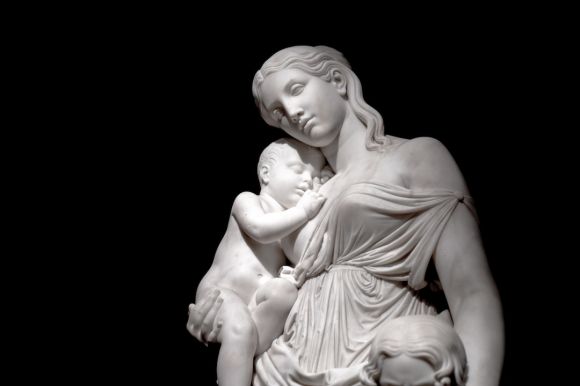Sculptures have long been admired for their ability to capture moments in time and convey powerful emotions. From ancient masterpieces to modern marvels, each sculpture tells a unique story that can captivate the imagination and provide insight into the artist’s intentions. In this article, we will dive into the fascinating stories behind some of the world’s most famous sculptures.
The Thinker by Auguste Rodin
One of the most iconic sculptures of all time, The Thinker by Auguste Rodin, depicts a man deep in thought, with his hand resting on his chin. Created in 1902, this masterpiece was originally intended to be a part of a larger work called The Gates of Hell. However, it quickly gained recognition and became a standalone piece. The Thinker is often associated with philosophy and contemplation, symbolizing the power of human intellect and the eternal quest for knowledge.
David by Michelangelo
Michelangelo’s David is a monumental sculpture that has become a symbol of strength and beauty. Carved from a single block of marble between 1501 and 1504, this masterpiece depicts the biblical hero David before his battle with Goliath. Standing at over 17 feet tall, David embodies the ideal male form and showcases Michelangelo’s exceptional skill in sculpting human anatomy. The sculpture has been praised for its lifelike detail and the sense of determination it conveys.
Venus de Milo
The Venus de Milo is an ancient Greek sculpture that has captivated audiences for centuries. Created between 130 and 100 BCE, this iconic piece portrays the goddess Aphrodite (Venus) in a moment of modesty as she adjusts her robe. What makes this sculpture particularly intriguing is the fact that it is missing both arms. The exact reason for the missing arms remains unknown, but it is believed that they were originally made separately and attached later. Despite the missing limbs, the Venus de Milo continues to be celebrated for its grace and timeless beauty.
The Kiss by Auguste Rodin
Another masterpiece by Auguste Rodin, The Kiss, depicts a passionate embrace between two lovers. Created in 1889, this sculpture showcases Rodin’s ability to capture the intensity of human emotions through his art. The Kiss has been interpreted in various ways, representing themes such as love, desire, and the human condition. This sensual sculpture continues to evoke strong emotions in viewers and remains one of Rodin’s most beloved works.
The Little Mermaid by Edvard Eriksen
The Little Mermaid sculpture in Copenhagen, Denmark, is based on the fairy tale by Hans Christian Andersen. Created in 1913, this sculpture portrays the mermaid sitting on a rock and looking longingly towards the shore. The story behind the sculpture is both tragic and captivating. In the fairy tale, the little mermaid sacrifices her voice and endures immense pain to be with her beloved prince. The sculpture captures the mermaid’s yearning for a different world and the sacrifices we make for love.
In conclusion, sculptures have the power to transport us to different times and evoke a wide range of emotions. Each famous sculpture holds a unique story that adds depth and meaning to its beauty. Whether it’s Rodin’s depiction of human thought and passion or Michelangelo’s portrayal of strength and determination, these sculptures continue to inspire and captivate audiences worldwide. By delving into the stories behind these masterpieces, we can gain a deeper appreciation for the artistry and the messages they convey.
